
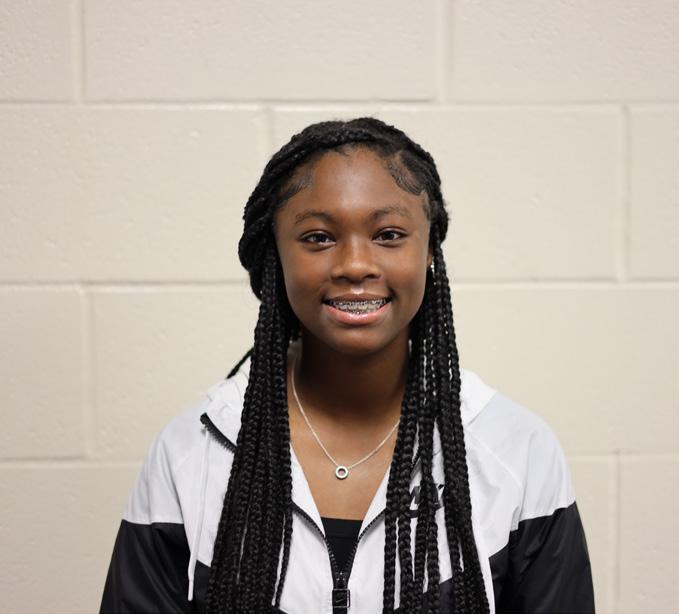

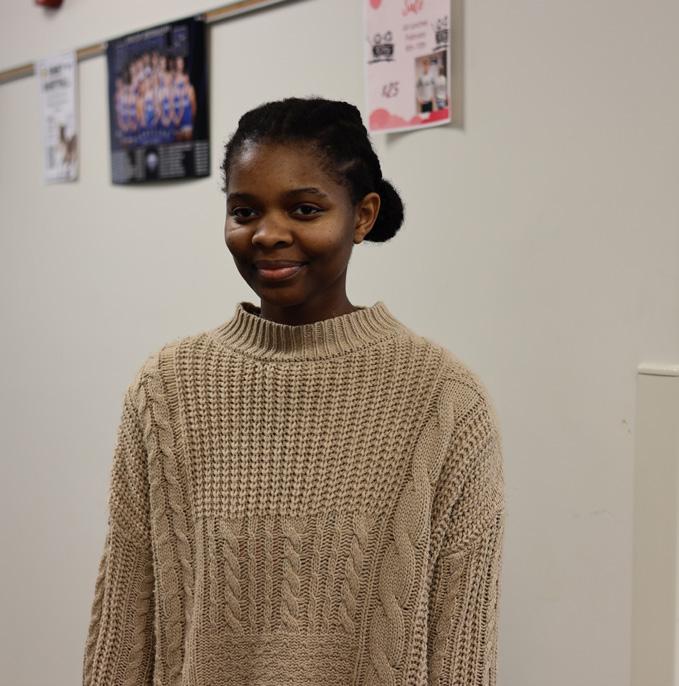

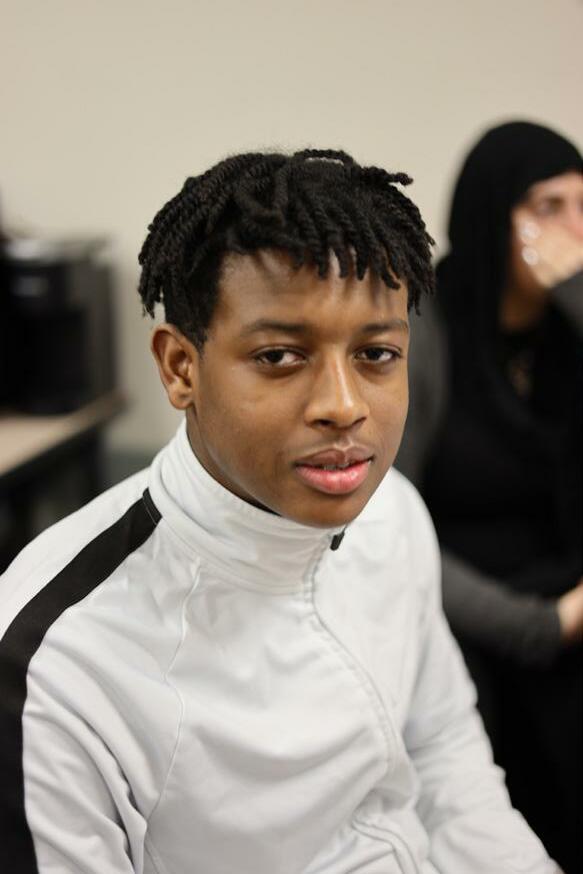
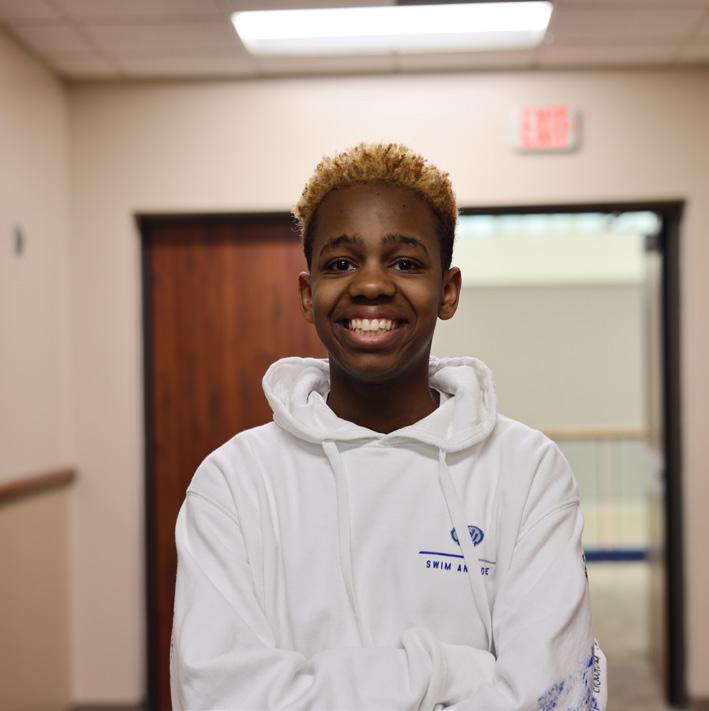

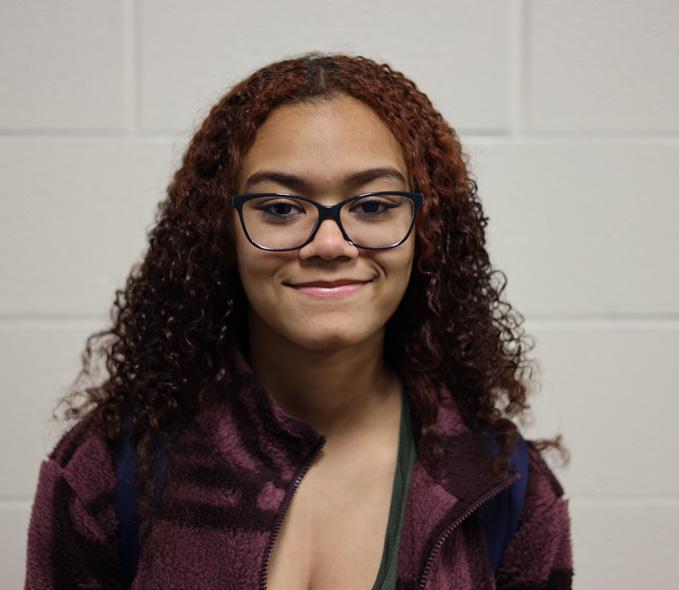
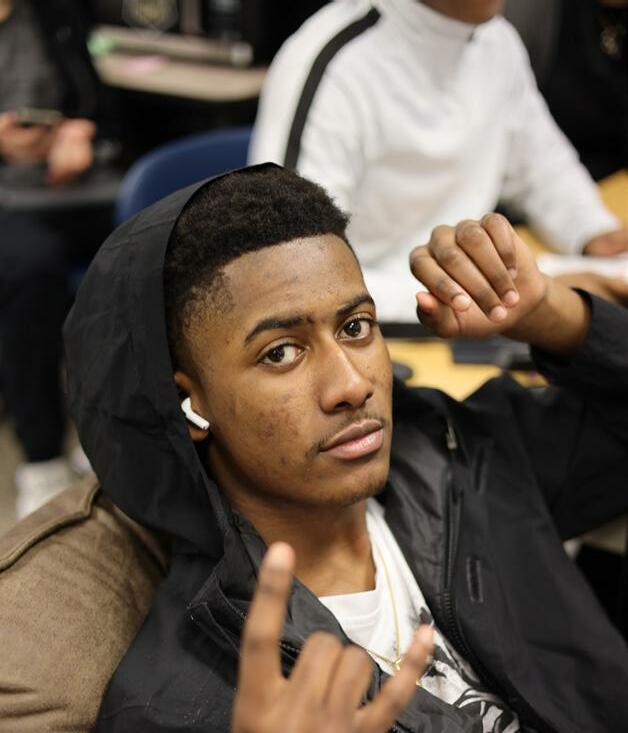
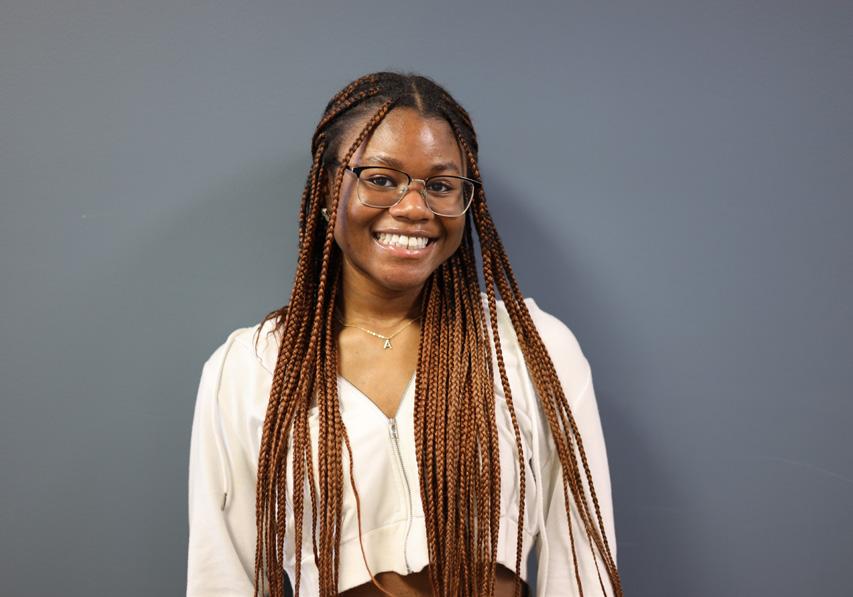
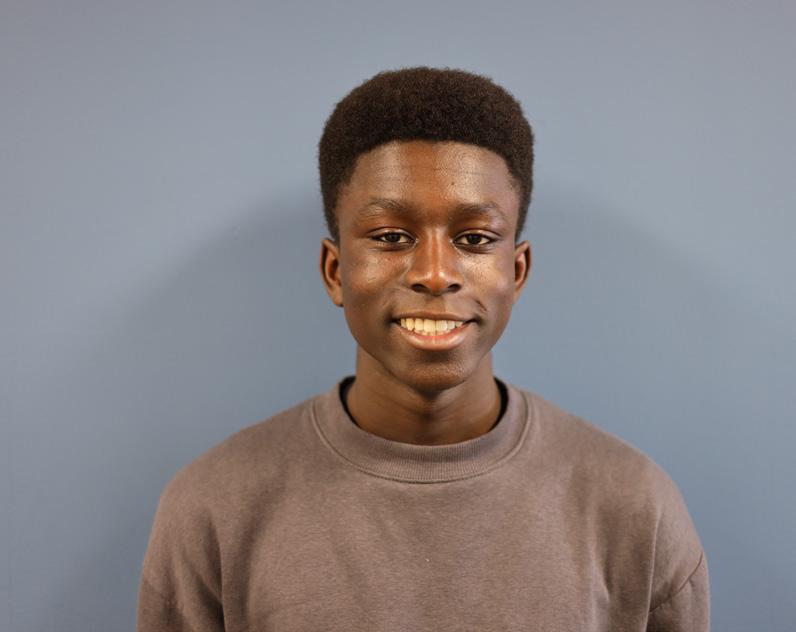



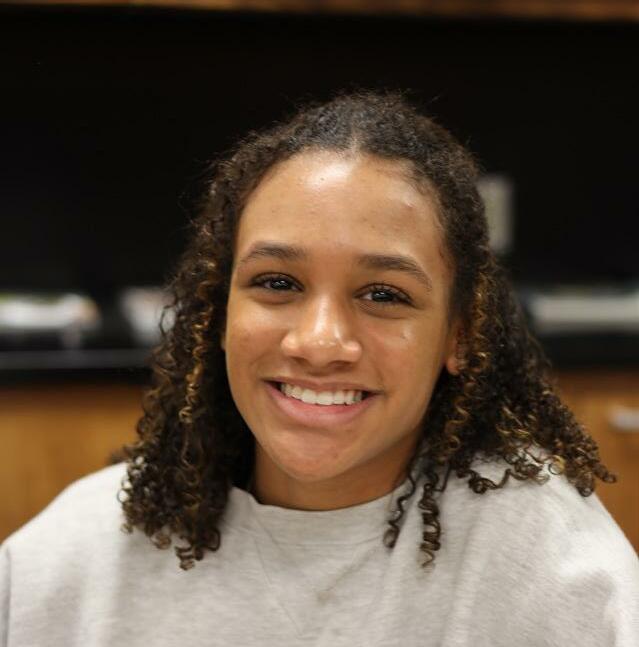
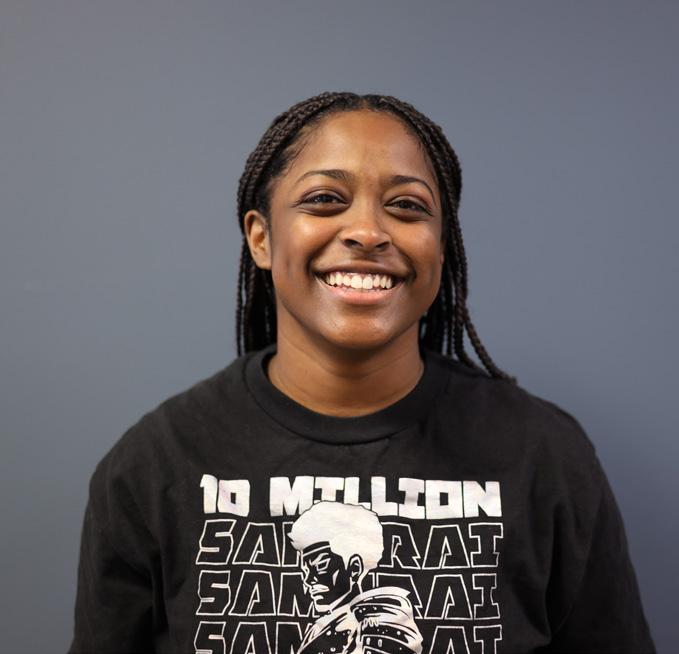
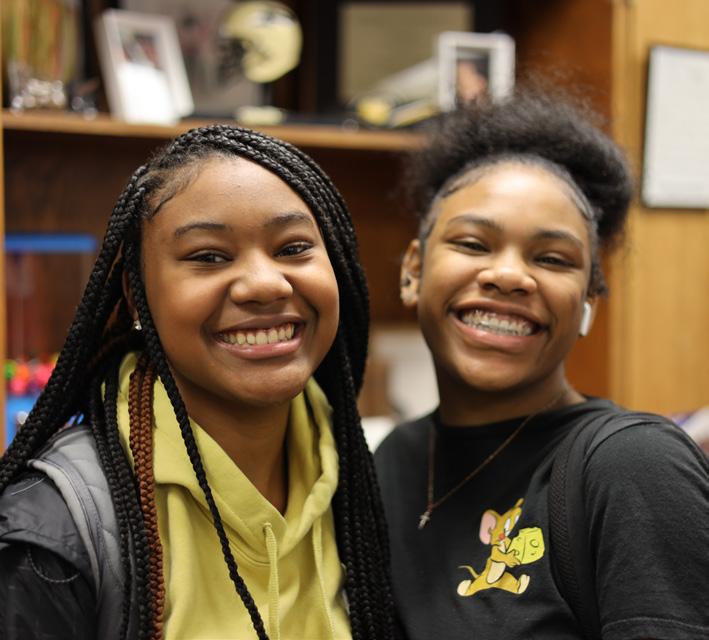
STAFF EDITORIAL: ANIMAL ABUSE

On December 9, 2022, Larry McAdoo was charged with 12 counts of animal abuse after being found with over 100 animals in his house. Police were called to his house and were greeted by a strong odor of animal feces and urine. In total, there were 25 dogs, 23 birds all different types, 14 rats, eight hamsters, seven hedgehogs, six rabbits, six lizards, five guinea pigs, four chinchillas, four cats, three tortoises, two snakes, two alligators, one racoon, one ferret and a goat. Multiple animals were compacted into one cage with not enough food and water for even one of the animals. Because of the terrible living conditions, some animals were found dead upon the police’s arrival. Several other animals had to be put down. McAdoo claimed that he was unaware of the terrible condition the animals were living in. He then proceeded to claim that the dogs did not even belong to him, but that he “takes dogs in for other people and finds them new homes.” He also stated that he never took the animals to the vet but attempted to “fix the issues” himself.
This is just one of the many disturbing animal cruelty cases that have occurred in recent years. According to petpedia, an animal is being abused every 60 seconds. There are multiple different types of animal cruelty such as abuse and neglect. Abuse is physically hitting or fighting an animal while neglect is more of not caring or providing proper care for animals. While abuse is most likely associated with animal cruelty, neglect is actually the most common form. Other examples of neglect involve not giving pets enough food or water, leaving them in a hot car, leaving them outside in bad weather for too long, not providing medical care, not providing adequate shelter or sanitation and hoarding. McAdoo was treating the animals in his house exactly like this causing his situation to spin out of control. No matter what form of abuse is being shown, consider all as animal cruelty.
MEET THE STAFF
Emma Bieberich
Annabella Burns
Sornavalli Chockalingam
Kaiden Corliss
Xavier Dokes
Grace Duffy
Mame Fall
Lauren Kopka
Nicole Morris
David Young ADVISER
Parker Farrand
Addison Ginther
Jordyn Grant
Avery Grunder
Marley Hayes
Gabriella Haynes
Caroline Hiott
Benjamin Kruer
Erin Lock
STAFFER OF THE ISSUE
Trinity MacKenzie
Aubrey Matasovsky
Nicole Mathenge
Trestyn Mayberry
Caio Menegardo
Charlotte Miksha
Madelynn Page
Maya Patel
Sydney Pinchouck
Amber Rivas
Aria Roberts
Mackenzie Roberts
Katherine Senseman
Hannah VanLandingham
Julianna Wells
Norah Wills
PAITYN O’NEILL
Paityn is a kind and charismatic member on staff. She always is willing to lend a hand and offer advice to new students. A strong leader, Paityn can be found always running around the publications lab helping others and being comedic relief in stressful situations.

02 editorial
Hamilton Southeastern High School
CRUELTY IS A CRIME
6 LOCAL NEWS 7 WORLD NEWS 8-10 COVER Harvesting on New Grounds Cancel Flights, Not the Enviornment What Happens When News Looks Away 4 OPINION The Veil on Valentine’s, The Real Cost 5 ENTERTAINMENT Stepping Outside the Comfort Zone 12 CLUB FEATURES BSU, Drama Club, Ski Club 11 PERSPECTIVE More than a Month 13 FEATURE Importance of Black Educators 14-15 SPORTS A Deep Dive, International Sports
IN THIS ISSUE
Paityn O’Neill
EDITOR-IN-CHIEF NEWS EDITOR FEATURE EDITOR COPY EDITOR STAFFERS Cassidy Hayes
Q&A
What makes you a strong believer in your faith?
I’m a strong believer because [with] my faith in God, [I] know that he’s always working even when you can’t see it, even though bad decisions or choices have been made.
What do you want others to know about your faith?
Christianity is forgiving and very rewarding. Christianity teaches the importance of love, forgiveness, and treating others with compassion and understanding. It is also very rewarding and forgiving, and building that relationship with God builds upon the benefits.
How does observing your faith affect your daily life?
By observing my faith in my daily life, I turn to God with my problems and mistakes and pray for other people not doing well. This also includes reading scripture, going to church, youth group, and doing the best [I can] to lead a moral and ethical life.
WITH JUNIOR DAVID IXBA
ALUMNI UPDATE


DAVID SHIELE: CLASS OF 2014
David Shiele,
2022.
What do you think is the most unique aspect of your faith?
The most unique aspect about Christianity is [that] God is the Father, Son and Holy Spirit. God also shows mercy. It is also unique because you can have a personal relationship and connection with God.
Do you find guidance for your future in your faith?
Yes, I find that my faith in God will pave a path for my future. I find that my faith in God provides me with meaning and a sense of purpose in life.
After being injured in football, Schiele turned a new leaf with HSENews as a sports anchor. He went on to major in broadcast journalism at Georgia State University, where he covered the athletic teams of Atlanta. Schiele now lives in Tampa, Florida, working as a weekend sports anchor at WTSP. “If this is what you want to do, take advantage of every opportunity you get,” Schiele said regarding his advice to student broadcasters. “It will pay off in the end.”

LAURYN SCHESKE: CLASS OF 2017
Once a Royal, always a Royal. In high school, Scheske was on the HSE girls’ varsity track and field team and the unified track team. Scheske went to Indiana Wesleyan University, majoring in Education of Exceptional Needs and Elementary Education. She taught at a preschool that specializes in a Communication and Foundations for Learning program. In August 2021, Scheske continued her service to HSE when she became the Functional, Independence and Transitional Skills (FIATS) teacher at HSE. Stories by Trestyn Mayberry and Katherine Senseman. Photos contributed.

03 student feature
Volume 34 | Issue 5 | Feb. 8, 2023
Q&A by Avery Grunder. Top photo by Marley Hayes. Bottom photo contributed.
THE VEIL ON VALENTINE’S OPINIONS ON THE SIGNIFICANCE OF VALENTINE’S DAY
Valentine’s Day is not considered a national holiday, but a lot of people still celebrate it by exchanging gifts with their friends, spending time with their significant other or eating chocolate alone. However, the people who do not care and do not celebrate it have a very valid question: Is Valentine’s Day really that big of a deal?
There is a very common belief that all people who are in relationships look forward to and celebrate Valentine’s Day, but according to a survey taken by 60 HSE students on the HSENews Instagram, that is not as true as it is believed to be. Half of the students who took the survey answered that Valentine’s Day is not a date that holds any significance to them. Out of the 30 students who
do not look forward to or celebrate Valentine’s Day, six stated that they are currently in a relationship.
Our questionnaire also shows that the majority of students surveyed do not have a significant other to spend time with this Valentine’s Day. When asked if they were in relationships, about 73 percent of students stated they were single.
Taking into consideration the survey answers from students and other studies, no solid answer can be found on whether Valentine’s Day is significant, as it varies from person to person. There are many different people with different opinions, and while one of them might hate Valentine’s Day and become irritated at the mere thought of it, it might be another’s favorite day and something
THE REAL COST STUDENTS DISCUSS THE IMPACT OF TAXING
At the age of 14, a teenager is legally allowed to work, with restrictions given by the United States government. Laws are set in place to provide minors with guidance and assistance in getting fair and just treatment in the working community. As an employee, minors are also required to pay taxes, which can significantly affect a teen’s savings plans and goals. The tax on minors will at some point affect a teen’s ability to pay and save for future expenses.
“I am expected to pay for college, insurance for my car, and other expenses,” junior Colson Lamm said. “I feel like taxes can set me back, but I also understand why we have to pay them.”
Teens are expected to pay for their college tuition and yearly fees with minimal the help of from their guardians. A teen on average will make around 30,000 dollars a year, while college tuition payments cost
around 35,000 a year.
“According to the Bureau of Labor Statistics (BLS) data, the median
they look forward to every year. The answer to whether Valentine’s Day matters is truly relative and will always vary depending on who is being asked. Story by Caio Menegardo.
salary of 16- to 19-year-olds is $609 per week,” Amelia Josephson from Smartasset said. “Which comes out to
$31,668 per year.”
The $30,000 a year does not all go to college savings, as paycheck deductions start with taxes, then expenses, then savings, leaving the teen with very little left to spend on themselves or on other unplanned expenses.
“After taxes and expenses, I am left with little to no money left,” senior Skyla Thorpe said.
The cost of college increases yearly, and most young adults are left with college debt which is partially due to the amount of money they lost while paying taxes as a minor.
“As of 2022, about 45 million Americans were saddled with student debt,” said Daniel Kurt, journalist for Investopedia.
Decreasing the amount of taxes, a minor has to pay could potentially decrease the amount of debt a college student will face. Story by Mackenzie Roberts.

04 opinion
STEPPING OUTSIDE THE COMFORT ZONE
STUDENTS EXPERIENCE MYSTERY LUNCH PAIRINGS
THE SCENES
NOW SHOWING
CHI-CHI NWOKORIE WITH VINE SAOPA IN THE CCA
There is no denying that the pandemic affected the way humans interact with each other. Being in isolation caused society to lose comfortability in social situations. The pandemic taught us the importance of social connection and human interaction.
A study done by BBC found that loneliness can affect levels of hormones associated with social bonding. According to the article, “humans need plenty of interaction to keep their brains in good order”. While socializing post-pandemic may be difficult, it is important to ease back into socialization seeing as it is critical to individuals and the societies they live in.
The lunch pairing was intended to be a way for students to step outside of their comfort zones and extend their social comfortability. Students submitted the form on the HSENews Instagram to participate in the social experiment during a lunch period. Students who decided to participate arranged a lunch period where they would have their “blind lunch meeting.” The goal with this social experiment was to challenge students to make new friendships
using a unique approach. The lunch pairings gave participants the opportunity to make friendships that could potentially go beyond a social experiment.
To make friendships was freshman Vine Saopa’s goal when she signed up. Saopa was looking for a way to make new friends and learn more about her peers. Her match had a similar but different goal in mind.





“[I want] more knowledge about this person,” freshman Chi-Chi Nwokorie said. “I hope to be able to talk to more people I don’t know.”
After discovering their goals, Saopa and Nwokorie were introduced to each other and left alone to enjoy their lunch. When approached about a post interview, it was hard to get a word in as they were so engrossed in conversation.
“The idea of trying something outside of your comfort zone will probably end up fine,” Saopa said. “Because I was really scared but it was literally just [a friendly person].
Consider meeting someone new this year, even if it is a little outside of your comfort zone. Story by Parker Farrand and Nicole Mathenge. Photos by Parker Farrand.
05 entertainment
HARVESTING ON NEW GROUNDS
AGRIPARK FARMERS, OUTSTANDING IN THEIR FIELD
The Fishers AgriPark opened to the public in July 2020, providing many chances for students and families to enjoy the outdoors and to learn about the plants and animals around them. The 33-acre urban farm has been making a significant impact on the community. The AgriPark includes various activities including public gardens, nature play area, mud play kitchen, programming barn, nature trails and much more.
The gardens are open from early July to late October. During that period, people can visit the AgriPark and pick their own produce or cut their own flowers free of charge. The AgriPark has partnered with HSE Schools to provide field trips to second graders to teach them about things like erosion, the equipment used on farms or in fields and where exactly their food comes from. Their partnership with the Future Farmers of America (FFA) program allows students interested in an agricultural career to volunteer and learn more about managing a farm. Trevor Wildey, the agricultural operations manager at the park, has spent three years supporting these students.
“The city benefits from a park like this in many ways,” Wildey said. “From fresh produce, education opportunities, volunteer opportunities, programs and special events, and offering a unique experience for our community. The park encourages people to try different produce and educates the community on the importance of farming as a career.”
Applied Science teacher, Tom Younts, has also noticed an educational benefit from the park. The park has volunteer opportunities for nearly every interest. People can work with plants, animals or teach kids who visit the park.
“[The park] has strengthened our curriculum,” Younts said. “When the students go to teach at the park, they have already learned about agriculture for a strong foundation of agricultural science to share.”
The Fishers AgriPark has been largely successful in its mission and has provided numerous advantages for the community and HSE Schools. Looking ahead to the future, the park encourages residents and students to get involved.

UPCOMING UPCOMING EVENTS EVENTS
“Come out and enjoy all the aspects of the park,” Wildey said. “Be sure to take some produce, see the animals, walk the nature trail and just enjoy the great outdoors. It’s fun to get down and dirty. Helping us plant and pick is very rewarding.”
For those interested in volunteering at the AgriPark or learning more about it, scan the

code on this page to visit their website. Story and infographic by Aubrey Matasovsky and Julianna Wells.

06 news
QR
Feb. 25 Drop-in Project
FISHERS AGRIPARK Feb. 11 Heart Hike From 11 a m to 2 p m visitors can participate in a self led hike and find hearts in nature This event is completely free Feb. 11-12 Punch Needle Class Learn how to make wall hangings rugs pi lows and more! All materials are provided class is $150 per person Feb. 15 Household Hero Learn how to fix a leaky toilet as well as basic maintenance such as adjusting the float adjustment screw $20 per person Feb. 23 Shop Class Learn how to safely use machines at the AgriPark like the CNC router and Laser Cutter $40 per person Visitors can create their own board game, ike s ing hockey or the ring and hook game $30 per person Find more events and register
FROM BORDERS TO BACKYARDS
INDIANA’S RESPONSE TO CLIMATE CHANGE
Recent climate change news only reports on big events, such as Japan switching to nuclear power and deadly storms in California. While events on country borders do not directly affect central parts of the United States, the long-term effects of climate change disrupt Indiana too. Hoosiers are already starting to recognize changes in weather. Rain and snow are becoming severe, humidity is more intense and air quality is decreasing from soil erosion. How is Indiana responding to climate change?
The Nature Conservancy, a global nonprofit for environmental change, created a climate change roadmap for Indiana in Feb. 2021. To aide natural climate, Indiana has a few different ways to help farmers adopt agricultural practices, including conservation tillage and crop rotation. This will
prevent soil erosion and improve air and water quality. Additionally, eight coal plants in Indiana will be retired by 2031 to increase the use of natural gases and renewable energy.
According to research from the U.S. Energy Information Administration, Indiana was the country’s eighth largest coal producer and third largest coal consumer in 2021. With the expense and negative health effects of running coal power plants, Indiana is looking toward more renewable energy alternatives, hoping to have 40 percent of Indiana’s electricity coming from renewable sources by 2035.
The Nature Conservancy is not the only group taking action, but without assistance from Indiana citizens, change will not be easily made. There are simple changes that can be made
in homes to use more renewable energy, such as switching to solar power roof panels for electricity. Solar power can also be used for air conditioning and water heating. The more simple changes that Indiana citizens make, the quicker Indiana will reach its goals of using more renewable energy sources.
As more news surfaces about climate change effects in coastal areas, Indiana will continue to act on this plan. The changes happening on country borders will affect life quality in Indiana and the Nature Conservancy is continuing to act fast to prevent further changes. Without help from citizens of Indiana, the road map might be too little, too late. Story by Sydney Pinchouck.
CANCEL FLIGHTS, NOT THE ENVIRONMENT
HOW AIRLINES ARE PLANNING TO REDUCE THEIR LOFTY CARBON FOOTPRINT
Humans first took flight in 1903. Now, 120 years and millions of flights later, air travel accounts for 4 percent of global warming and 2.5 percent of CO2 emissions. With climate change being such a prominent and looming threat, it only makes sense that any and every effort to reduce it would be made.
Recently, airlines have been striving to achieve carbon neutrality, the act of releasing net-zero carbon emissions. This goal has already been tackled through the creation of electric cars, who have managed to achieve netzero carbon emissions. Although carbon neutrality was successful in this instance, it was achieved on a very small scale. Eliminating the carbon emissions of something as large as a plane requires more innovation and money than used in the electric car or other carbon-friendly transportation.
Despite the large task, airlines such as Delta, JetBlue, United and Southwest are attempting to integrate new carbon neutral solutions as of September 2022. Hydrogen fuel made with renewable power, electric planes, sustainable aviation fuel (SAF) and carbon offsets are some examples of the ways airlines are currently trying to minimize carbon emissions.

However, these options, while appealing, are not always accessible. SAF, a fuel made from plants or used cooking oil, is too expensive for the average airline to implement. When utilized though, SAF could cut up to 80 percent of carbon emissions produced by the burning and harvesting of petroleum-based jet fuel that cause rare but environmentally dangerous oil spills. Therefore, the adoption of fuel from an organic and environmentally friendly source is a
beneficial alternative to the crude oil used by many airlines seeking to diminish carbon emissions.
In the future, the sky may be filled with electric aircraft or planes running on renewable fuel, but it will take time, money and innovation to get there. Story by Charlotte Miksha.
07 world news
WHAT HAPPENS WHEN NEWS AWAYLOOKS
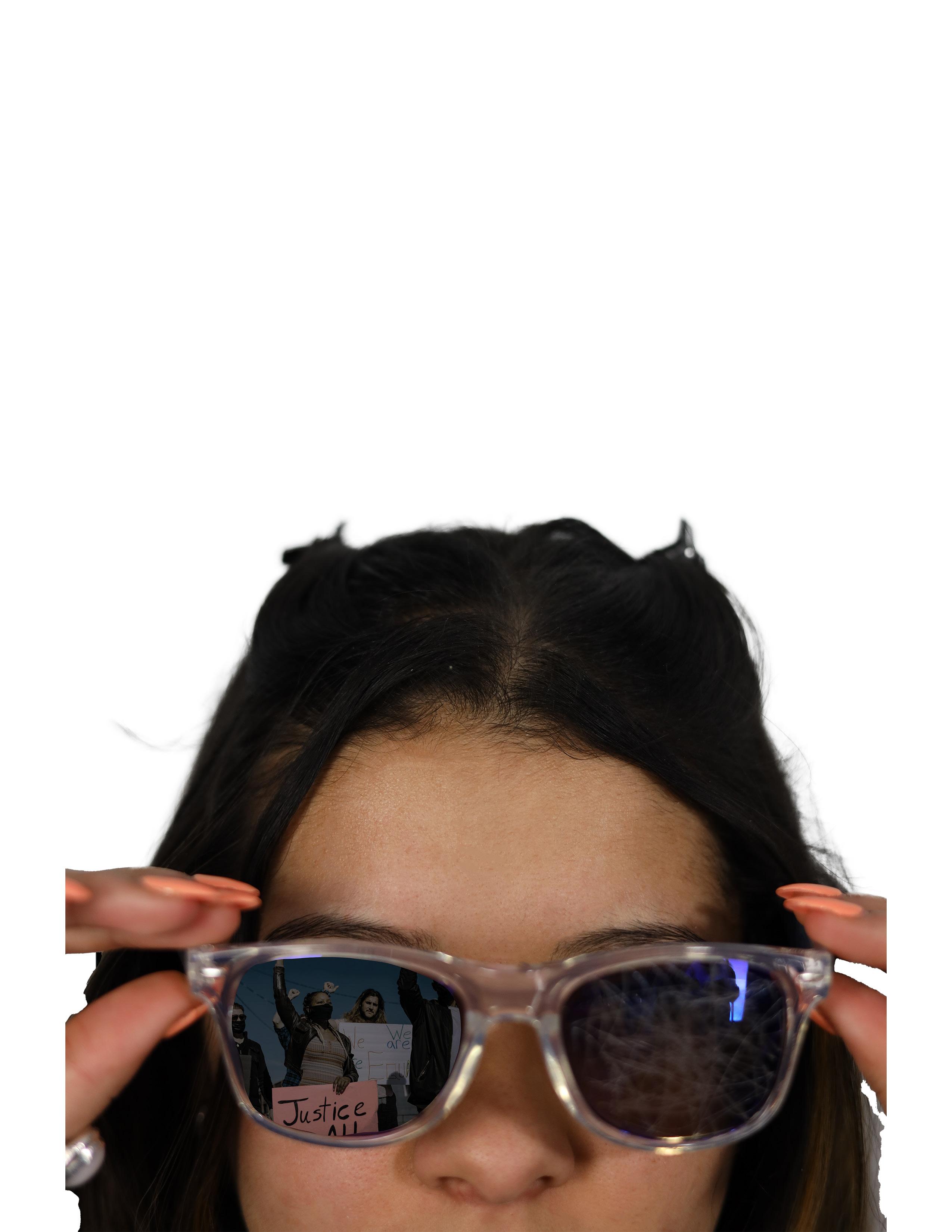
EVEN WHEN THE NEWS LOOKS AWAY THE STORY DOES NOT DIE ALONGSIDE IT
TThe freedom of the press is a longstanding value of the country. The digital age has allowed more people to experience the creation and spread of information and has been widely accessible.
Hot topic issues can gain much needed momentum through a spike in media coverage. However, more relevant problems can take precedent, leaving long term issues behind. What happens when the news looks away from these ongoing stories?
Demonstrations for LGBTQ+ human rights have existed for many decades, with one of the most wellknown protests being the Stonewall Uprising in 1969, a series of riots caused after police raided the Stonewall Inn. It was one of the first times in history where LGBTQ+ people fought back against their discrimination and showed pride in who they were. A year later in 1970, to remember Stonewall’s impact, the first pride parades were held. However, it took another 33 years for Massachusetts to be the first state to legalize same-sex marriage in 2003.
Even after legalization, married same-sex couples did not always qualify for the same marriage benefits as opposite-sex marriages until the United States v. Windsor decision in 2013.
Last year, the rights and recognition of same sex couples was considered for review by Supreme Court Justice Clarence Thomas. Anti-LGBTQ+ hate crimes have continued since last Dec., such as Club Q, a LGBTQ+ nightclub in Colorado, was the target of a mass shooting where five people lost their lives and 19 others were injured.
One other social movement from recent years was the boycotting of Disney’s live-action Mulan, which was released in 2020. Mulan was partially filmed in the Xinjiang region of China in Aug. 2018. While it may seem insignificant, in 2017 personal testimonies came out about Muslim “re-education” camps in that region. These camps detained a total of roughly 1.8 million Muslims as of 2020 with the goal of “fighting terrorism” according to the Chinese authorities.
However, there have been accounts of beatings and deprivation of essentials such as food, water, and sleep.

This controversy gained attention during the initial release of the liveaction Mulan, but the issue has disappeared from mainstream media, despite the continuation of the camps
and the denial of their existence entirely.
Another movement that is longstanding is climate change advocacy. In the last decade, it has picked up momentum due to one of the most vocal activists, the now 20-year-old Greta Thunberg.
Thunberg uses a variety of demonstrations to prove her and her fellow activists’ point. From publicly criticizing governments, companies, and world leaders’ lack of climate action on social media to being detained after protesting at a German coal mine just last month, she has led the charge. Just five years ago, in Aug. of 2018, the then 15-year-old began what would become a global movement.
Thunberg encouraged fellow students to follow her in a school strike each Friday, creating the slogan #FridaysForFuture. The protests became widely publicized, creating large amounts of supporters and critics. No matter the viewpoint, news outlets flocked to Thunberg, creating an aura of media attention around climate change. The thousands of students protesting in the streets would have brought awareness, but it was the media coverage that took the movement to a global level.

“We, above all, need [climate goals] for 2021 and every following month and year to come,” Thunberg said at a 2021 protest in Glasgow.
There is no question that climate change is a pressing issue, but its slow progression has hindered its ability to constantly appear in the media. Without pressing new developments, the media looked away.
A similar hashtag sprung up around the same time as well. In 2006, sexual assault survivor and activist Tarana Burke started the #MeToo movement to support victims and survivors of
09 cover 09 cover
Continued...
sexual assault. The hashtag exploded in 2017 and was seen everywhere— from social media posts to magazine covers, Burke provided a voice to those who were not heard.
It began to gain traction when actress Alyssa Milano tweeted ‘#MeToo’ and within 24 hours, there were 12 million responses on social media. Voices that were quiet for years came resonating throughout the world, resulting in repercussions for those found responsible.
People such as Harvey Weinstein, a director who was accused of sexual misconduct from over a dozen women, were put in the spotlight and faced repercussions.
Currently, Burke focuses on helping a wide spectrum of survivors, aiding them in finding their own unique journey to healing. Simultaneously, the MeToo organization is working to disrupt the systems that allow sexual violence to harm communities.

Burke is continuing to work towards to route of the problem, saying that “There has to be a shift in culture.”
However, sexual assault remains to be one the most under reported violent crimes, according to the Bureau of Justice, with only around 20-30 percent of cases being reported each year.
In a similar fashion to the #MeToo movement, what started in 2013 as the social media trend #BlackLivesMatter
grew into a globally known campaign. According to the Black Lives Matter website, they were founded on the mission of “investing in the future of Black.”
Though it grew over the next few years, it was not until the death of George Floyd on May 25, 2020, that the movement gained worldwide traction and news coverage. Following Floyd’s death, the Washington Post reported that, “developments of recent [events] show how the movement has embedded in the mainstream in ways that would have been unthinkable just a few years ago.”
Throughout 2020 and into 2021, the media dove straight into covering the subject. Headlines relating to Black Lives Matter appeared daily, and the discussion of race in America was being brought back to the table.
A national poll conducted by Civiqs, a non-partisan polling service, showed 52 percent support for Black Lives Matter at the height of its media coverage in mid-2020.
As news coverage declined across the following two years, the same poll reported 41 percent support at the start of this year. Despite the drop in popularity, the organization has pushed What on in its efforts to support the African American
community.
On Sept. 20, 2022, Black Lives Matter Global Network Foundation re-launched its voter registration website to shrink the racial gap among voters. United States Census Bureau’s report on the 2022 midterm election found that 64 percent of African Americans registered to vote, an increase from the 59 percent in 2018.
The drop in coverage was not a deliberate scheme on the part of media platforms, simply a choice to cover the most relevant subject. As global safety issues like the pandemic picked up rapid daily coverage, the space for social movements became sparce.
The media has a responsibility to provide its readers with the most relevant and timely information. The fast-paced nature of modern society coupled with limited resources creates a situation where certain stories are forced to be put on the back burner. Even when the news looks away, the story does not die alongside it. Story by Erin Lock, Madelynn Page and Maya Patel.
What do you think is the responsibility of the media?
“I think the purpose of media, especially in schools, is not only to educate the students about whats going on but also to englightent them about other topics they don’t know about.”
-Amber Liwanag, 9

“The role of the media is to give people unbiased information.”
-Hannah Davis, 10
10 cover
WHAT BLACK HISTORY MONTH MEANS AT HAMILTON SOUTHEASTERN
MORE THAN A MONTH
The celebration of Black History Month in the United States dates to 1976 when historian Carter G. Woodson initiated the first celebration known as Negro History Week on Feb 7. Woodson intended the week to be a time to educate the public about Black history and culture. The celebration was officially established as Black History Month on Feb. 10, 1976. The month is used to honor the struggles and successes of African Americans throughout United States history.
While Black History Month technically just lasts a month, recognizing and celebrating Black history is something that can be done throughout the year. Students were interviewed about the topic and were asked questions about the month’s significance and its development and how it can be celebrated.
“Instead of trying to ignore the history Black people in this country has faced, [Black History Month] gives us a short window to reminisce
instead and remember without dwelling on the past,” junior Gloria Lane said. “It’s definitely more significant now than it used to be, but people and companies use it as a way to show they aren’t racist and post campaigns that, instead of highlighting Black History Month, it renews their yearly ‘we aren’t racist sticker’.”
Not only is it important to acknowledge achievements of African Americans in the past, but we, as a society, have to continue to support African Americans today. Lane believes it’s important to recognize Black History Month and celebrate in different ways. “Donate to black charities or support black owned businesses,” Lane states.
“I think the significance of Black History Month is honoring the African Americans who made a difference in the past and honor them today,” Freshman Jaxon Wanza said. “I think a way to celebrate is teaching in the school systems, so people are educated on what people have done in the past, and why this month is so important in history.”
Senior Audrey Cruser suggested improvements HSE can make to the recognition of Black History Month.
“I know we make posters and there are clubs that celebrate [Black History Month] individually, but I think we could do one big event that’s like a pathways period where everyone gets together sort of an atmosphere of a club fair where it’s interesting, supposed to sitting in class and watching a PowerPoint
that no one looks at,” senior Audrey Cruser said. “As the world becomes more accepting of everyone, I believe it’s become more valued and more important to celebrate it.”
The three students mentioned above all highlighted the importance of continuing to acknowledge and celebrate Black History Month because of how the month’s impact continues to develop.
“I think [Black History Month] is really significant because it tells us what our ancestors have done and tells us things that are important to our culture,” sophomore Lucy Nanista said. “I think it has developed pretty well because schools take a nice focus on it by doing stuff like this, and not just asking students what they think of it.”
Recognizing and celebrating Black History is something that can and should be done year-round. Learning and acknowledging the struggles and triumphs African Americans faced through US history allows society to open its eyes and unify as one. This Black History Month, remember the month’s importance, and celebrate how far society has come. Story by Marley Hayes, Nicole Manthenge and Amber Rivas.
BLACK HISTORY MONTH 2023 THEME: BLACK RESISTANCE
Beginning in 1928, each Black History Month has been given a theme designated by the president of the Association for the Study of African American Life and History. The purpose of these themes is to “bring the public’s attention important developments that merit emphasis.” This year’s theme is Black Resistance, defined as protecting and advocating for quality education, and providing Black representation in major forums such as sports and politics. Story by Lauren Kopka.
11 perspective
BLACK STUDENT UNION
CHANGING THE ENVIORNMENT
Black Student Union is currently making strides in our school’s environment by empowering students to be themselves, supporting Brown and Black students to perceive themselves on an equal level, and allowing them to have unconditional support from other members.
“I love being able to come together with a lot of the black community at HSE to build a memorable club with an outstanding legacy of making HSE more equitable and welcoming to its POC students,” club President Edyn Curry said. “I believe BSU has made its mark on HSE, by establishing a strong club that supports Black and other POC members at HSE.”
Members involved in BSU share how the club has provided a safe community for not just Black students and teachers, but for everyone. Story and photo by Amber Rivas.

DRAMA CLUB
BEHIND THE SPOTLIGHT
If making costumes, controlling the lights on the stage or even being in the spotlight has ever been of interest, then the HSE Drama would be the club to join.

Over the years many students have thrived in performance environment
“Drama club offers a place for all people to find a purpose and a community,” sponsor Ethan Mathias said. It has impacted many students to branch out and create connections to others with similar interest.
Club President, Chelsea Murdock said, “The relationships that I’ve very easily formed in Drama Club have developed into a second family and a place I could really find home in a school as big as HSE.”
The club will perform their upcoming musical ‘Matilda’, March 9 through 11. The doors will open at 6:30pm with the show to begin at 7pm. Story by Mame Fall and Annabella Burns. Story by Mame Fall and Annabella Burns. Photo by Lauren Kopka.
SKI/SNOWBOARD
TAKING ON THE SLOPES
CLUB
The Ski and Snowboarding Club was created to give students the chance to try something new and give those who have already experienced the fun of this winter sport an opportunity to experience it with friends. Currently, this club is sponsored by Math teacher Letitia McCallister.
“The club is a great way to find out if you like the sport,” McCallister said. “It’s a lot of fun testing out your skills on the slopes.”
The meetings take place at the Perfect North Slopes in Lawrenceburg, Indiana. 154 students travel in buses immediately after school to ski and snowboard and have fun until they head back to HSE around 11:30. Story by Marley Hayes and
Roberts. Photo contributed.

12 club features
Aria
IMPORTANCE OF BLACK EDUCATORS
CONNECTING, TEACHING STUDENTS WITH MORE IMPACT
February is Black History Month, a time when we all attempt to better understand the triumphs and struggles of African Americans throughout the history of the United States. The United States places a spotlight on the skilled Black people in the United States. With that, it becomes increasingly important to have diversity in our schools, so students feel seen and represented. Having Black educators in schools helps students understand the world from different perspectives. Additionally, it gives students more opportunities to connect with their teachers.
Being in a school with predominately White teachers makes it that much more important to have black educators. At Hamilton Southeastern High School there are fewer than 10 Black educators out of more than 200 people on staff.


When asked about the importance of Black educators in a poll on Instagram, many responses included comments about Black students being limited by inequalities in the education system, which is something White teachers cannot understand. They also explained how they feel uncomfortable when their only option to learn about history is from the perspective of a White teacher.
Instructional Assistant Donovan Pitts explains how difficult it is for Black students to connect with teachers who do not share the same struggles. “Everybody has a different look on life. The White teachers, the deans and all that. They truly don’t understand the depth of what Black and Brown students come from. When the kids come to my room, they really give me an [easier] way to talk to them, like me.”
Having Black role models at this
age is very important for students, but the positive effects extend to the teachers as well. English Teacher Breana Daniels spoke about her effect on students here.


“My presence doesn’t remove the challenge of competing with everyone else’s natural comfort, but it makes it possible for Black and Brown children to be confident in their own skin,” Daniels said. “As a result, my Black skin, intelligence, and willingness to educate provide precisely what is needed.”
Black educators can help students understand different cultures and backgrounds. English as a New Language teacher, Rhonda St. Hilare, educates her students about her own culture, as she is an immigrant from Trinidad and Tobago, a Caribbean Island. “Whenever I have a classroom


of regular ed students, I insist that they greet me as they enter. This is a lesson I hope to leave with them about how this little act of having good manners, goes a long way in showing respect and making interactions with others more pleasant and enjoyable.”
Overall, having Black educators in schools has a far-reaching impact on all students. Black educators are desperately needed in schools. Having educators that represent minorities is very important to students who do not get many chances to see themselves represented. It demonstrates to all students that they can be successful. In the future, representation should be the expectation, so that more students can experience comfort and understanding in school.
13 feature
Story and photos by Hannah Vanlandingham and Mame Fall.
Top left: Donovan Pitts, Instructional Assistant. Bottom left, Rhona St. Hilare, English teacher. Middle: Stevani McCray, Math Teacher. Bottom Middle: Breana Daniels, English Teacher. Top Right: Mason Hardimon, Instructional Assistant. Bottom Right: Stephanie Peterson, administrative Assistant.
A DEEP DIVE
A BEHIND THE SCENES LOOK INTO THE LIFE OF A SWIMMER
Swimmers all around Indiana wake up at the crack of dawn to practice for the biggest meet of the season – Sectionals. At Hamilton Southeastern high school, swimmers are preparing to compete in the sectionals on February second and fourth, and balancing these efforts with school and personal responsibility is difficult. “Balancing school and swim is no easy task, so I use my study hall and pathways wisely.” Said junior Audrey Crawford.
Swimmers start their day at 5 am, having a 2-hour practice, swimmers do not have time to go home after their first practice and usually go to school after their practice is over. On top of putting so many hours into their sport, swimmers must keep their grades up in school so that they can still be part of the team and continue to swim. Because of their practice schedule, it is imperative that swimmers put time and effort into completing homework during the school day.
Despite having a school day, swimmers must focus on their swim meets right after school. Competitions are around the corner and facing some of our rival schools like Fishers and Carmel high school, not only motivating other swimmers but making them think about their future.
Jumping in the pool, counting your breaths, and making quick changes from your swimsuit to clothes. It’s more than just hard work and dedication, but instead love for the sport that will get you somewhere and make you better. Not only practicing in the water to perfect their form, but also in the weight room to strengthen their endurance and help them the water.
Beginning the morning at the swimming pool, doing laps for hours and deep diving into the 13-foot pool, HSE Swimmers compete many times over the course of the week. Crawford is driven to practice in order to improve her skill along with her team. “Who are ranked higher than us team

wise so it’s motivating just to strive to close that gap between our teams” Crawford said. Hamilton Southeastern swimmers strive for wholeheartedness and devote themselves for a couple of minutes till they hear the buzz to beat the other school’s time and represent Hamilton Southeastern swimming. Story by Grace Duffy and Caroline Hiott. Photos by Rotimi Aluko.
COMPETITION DAY TIMESTAMPS

14 sports
am- Wake up 5:20 am- Stretch Out and Get Ready for Practice 5:30 am- Breathing Exercises to Relieve Stress 5:40 am- Drive to Practice 6:00 am- Begin Practice 8:00 am- Shower 8:10 am- Eat Breakfast 8:20 am- Leave Nadatorium 8:30 am- Begin School 3:05 pm- Finish School and Arrive at Pool 3:20 pm- Warm Up in Pool 3:50 pm- Study Time 4:30 pm- Eat Snacks and Load Busses for Meet 5:00 pm- Arrive at Opposing School 5:30 pm- Warm Up for Meet 6:00 pm- Begin Meet 7:30 pm- Winners are Announced 8:30 pm- Arrive at HSE 9:30 pm- Head Home and Finish Homework 10:00 pm- Go to Sleep
5:10
ADDING TO THE KNOWLEDGE ABOUT SPORTS ALL OVER THE WORLD
International sports, like rugby and cricket, are not commonly recognized by people in the United States but help to entertain and build connections with other countries around the world. International sports bring people from different countries, beliefs and culture together, even with their differences and encourage them to be more open to learning about their different traditions. With such sports, people find out they have more in common and build friendships.
Rugby is one sport that helps build connections. Rugby is a technical sport that originated in England and is played throughout the world, even here at HSE. Rugby has grown into one of the world’s fastest growing sports. But many might not know that there is a Rugby World Cup that originated in 1905.
Some events, like the FIFA World Cup, spark more viewership in America due to its traditions that not many other countries have, including mascots, ball design and national anthems. The World Cup is the most watched sporting event internationally. As reported by CNN, 58 percent of soccer fans plan to watch the tournament, and that number will continue to grow in upcoming years. The World Cup not only contains an entertainment factor, but also allows countries all over the world to earn billions of dollars in winnings.
Another sport that is not well known is cricket. Cricket was first played in Southeast England in the 1600s and is now most popular in India. This is bat-and-ball game is played between two teams of eleven players on a grass field. Cricket is more often played in developing countries, but America has adopted a game known as baseball. Both sports contain similar ideas but differ in the shape of their fields and other rules.
The lack of knowledge of these sports is evident across the United States, as many people are not informed of about the positive effects of international sports. This includes genuine connections between countries and sharing cultures between athletics. This is key to helping better acknowledge the struggles of people with different backgrounds, which is what international sports help do. All these sports that the United States lack to represent and more influence many aspects of the world, from a country’s ideologies or amusement to their economic success. Story by Emma Bieberich and Jordyn Grant.
INTERNATIONAL SPORTS OF THE ISSUE: JACK JACOBS ATHLETE
TRAIT: GRIT
One could argue that freshman Jack Jacobs was destined to lead a royal existence. Jacobs, a dual-sport athlete who plays basketball and football, has strong ties to Hamilton Southeastern. Both his parents being English teachers, but Jacobs fathering also coaching basketball. “It’s great because he yells at all these guys,” Jacobs said when asked how it felt having his father as a coach. “But he does it every day with me and is always pushing me to get better.” Jacobs, a point guard for the basketball freshman team, recently earned playing time for the varsity team. Jacobs was able to advance to a level where most freshmen can only graze because of his grit and resolve. “I don’t really know why I was the only [freshman],” Jacobs said. “I think maybe [it’s] because I just go out there and try and get better every day and try to play my best.” Story by Xavier Dokes. Photo by Sorna Chockalingam.

15 sports
@hsenews
Page by
Benjamin Kruer and Aria Roberts.
Page 13
other cultures, as well”
opportunities to help their students learn more about
can look up to and learn from can provide them with
“A teacher’s unique position as someone who students
Pages 8-10


subject is still relevant.”
“Issues can lose media attention over time, even if the
Page 7
renewable energy sources.”
the quicker Indiana will reach its goals of using more
Page 6 “The more simple changes that Indiana citizens make,
managing a farm.”
agricultural career to volunteer and learn more about
(FFA) program allows students interested in an
“Their partnership with the Future Farmers of America
www.hsenews.com @hsenews
www.issuu.com/hsenews
Universal Negro Improvement Association
ant vegetation of our Motherland.”
guished race to which we belong; green is the color of the luxuri -
redemption and liberty; black is the color of the noble and distin -
“Red is the color of the blood which men must shed for their
History Month.
to red, yellow and green, symbolic colors associated with Black
celebration of Black History Month. The issues’s logo was changed

This Orb cover displays a collection of HSE’s Black students in
Behind the Cover:
HALFTIME SHOW RECIEVER FUMBLE QUATERBACK TOUCHDOWN


SIDELINE SUPERBOWL KICKER TROPHY PUNT
Page 4
ability to pay and save for future expenses.”
“The tax on minors will at some point affect a teen’s
Page 2
“...Some animals were found dead upon arrival.”
Quotables
ON THE FLIPSIDE
Super Bowl Word Search
SPORTS SPECTACULAR
@SoutheasternSN_ @hsetv @SoutheasternSN























































